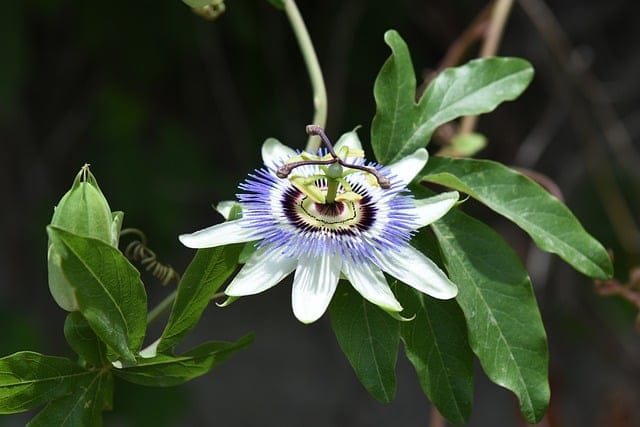How to grow Passionfruits
Passionfruit is a delicious tropical fruit that is enjoyed by many for its unique flavor and versatility

In this article:
- Introduction
- Choosing the Right Variety of Passionfruit
- Climate and Soil Requirements
- Planting Passionfruit
- Watering and Fertilizing
- Training and Support Structures
- Pruning and Trellising
- Managing Pests and Diseases
- Harvesting Passionfruit
- Troubleshooting Common Problems
- Tips for Maximizing Yield
- Culinary Uses and Recipes
- Conclusion
Introduction
Passionfruit is a delicious tropical fruit that is enjoyed by many for its unique flavor and versatility. Growing passionfruit at home can be a rewarding experience, providing you with a bountiful harvest of fresh fruits. This article aims to guide you through the process of successfully growing passionfruit.
Choosing the Right Variety of Passionfruit
There are several varieties of passionfruit available, and it is important to choose the one that is best suited for your climate and preferences. Some common varieties include Purple Passionfruit, Yellow Passionfruit, and Sweet Granadilla. Consider factors such as fruit flavor and size, as well as resistance to pests and diseases when selecting a variety.
Climate and Soil Requirements
Passionfruit thrives in a warm, tropical or subtropical climate, with average temperatures between 70-85°F (21-29°C). They require at least six hours of sunlight daily. Passionfruit plants prefer well-draining soil with a slightly acidic to neutral pH level. Ensure the soil is rich in organic matter to provide essential nutrients.
Planting Passionfruit
Passionfruit can be planted from seeds or more commonly from grafted plants, which provide consistent quality and disease resistance. Choose a location that is sheltered from strong winds. Dig a hole twice the size of the root ball, and gently place the plant in the hole, ensuring the graft union is above the soil level. Backfill the hole with soil, and water thoroughly.
Watering and Fertilizing
Water passionfruit regularly, especially during dry spells. The soil should be kept consistently moist, but not waterlogged, as this can lead to root rot. Mulching around the base of the plant can help retain moisture. Fertilize passionfruit regularly with a balanced organic fertilizer, rich in potassium and phosphorus, to promote healthy growth and fruit development.
Training and Support Structures
Passionfruit vines are vigorous climbers and require sturdy support structures to grow on. Install a trellis or arbor to provide vertical support. Train the vines by gently tying them to the support structure using soft gardening ties. This will prevent them from becoming tangled and allow for better air circulation.
Pruning and Trellising
Pruning is essential for passionfruit plants to maintain their shape, promote airflow, and encourage new growth. Remove dead or diseased branches as soon as they are noticed. Prune selectively to remove overcrowded shoots and reduce the canopy density. Regular trimming will help to create a more manageable and productive plant.
Managing Pests and Diseases
Passionfruit can be susceptible to pests and diseases such as aphids, mites, and fungal infections. Regularly inspect the plants for any signs of infestation or disease symptoms. Use organic pest control methods whenever possible, such as neem oil or insecticidal soap. Proper cultural practices, such as maintaining good airflow and avoiding overwatering, can help prevent many common issues.
Harvesting Passionfruit
Passionfruit can be harvested when they are fully ripe and have turned color. They should have a slightly wrinkled skin and feel slightly soft to the touch. Harvesting too early will result in a lack of flavor, while overripe fruits may start to rot. Gently twist the fruit off the vine to avoid damaging the plant.
Troubleshooting Common Problems
Passionfruit cultivation can face challenges such as poor fruit set, nutrient deficiencies, or unusual plant behavior. This section will provide guidance on identifying and resolving these common issues to maximize the health and productivity of your passionfruit plants.
Tips for Maximizing Yield
To ensure a high yield of passionfruit, consider techniques such as hand pollination, regular maintenance, and proper fertilizer application. Learn about the specific requirements of your chosen passionfruit variety and implement best practices accordingly. Consistency and attentiveness are key factors in achieving a plentiful harvest.
Culinary Uses and Recipes
Passionfruit is not only delicious on its own but can also be used in a variety of sweet and savory recipes. Discover the creative ways to incorporate passionfruit into drinks, desserts, sauces, and more. This section will provide you with some exciting culinary ideas to make the most of your passionfruit harvest.
Conclusion
Growing passionfruit can be a gratifying experience for any enthusiastic gardener. By carefully selecting the right variety, providing optimal growing conditions, and implementing proper care techniques, you can enjoy a bountiful harvest of this tropical delicacy. Follow the guidelines outlined in this article and watch your passionfruit plants thrive!
